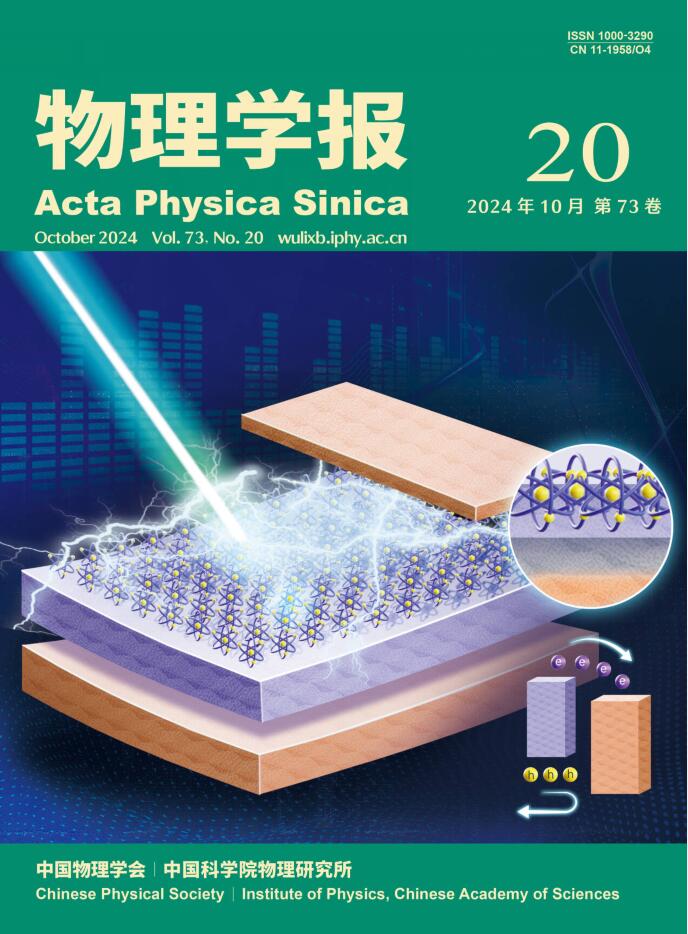利用样品阱对太赫兹超材料进行超微传感
IF 0.8
4区 物理与天体物理
Q3 PHYSICS, MULTIDISCIPLINARY
引用次数: 0
摘要
提出了一种基于太赫兹电磁诱导透明效应的样品陷阱超材料传感器。传感器的基本单元结构是由一根金属线和一对分环谐振器(srr)组成,它们耦合在一起产生类似eit的效果。在1.067 THz处获得了半峰全宽(FWHM)为178 GHz的透明峰,透明峰的最大透过率为89.71%。研究了该结构的传感特性,灵敏度为178 GHz/(RIU·mm3)。通过分析超材料谐振频率点处的电场分布,发现两侧srr间隙处的电场最强。在电场最强的间隙处构造样品陷阱。将光刻胶作为被测对象填充到样品陷阱中,成功测量了50 GHz的频率偏移,验证了样品陷阱结构可以应用于传感。经过研究分析,通过将样品置于样品阱中,将样品体积减小到超微观水平,将灵敏度提高到5538 GHz/(RIU·mm3),比以前提高了31倍。水、人体皮肤和大鼠皮肤样品的成功鉴定表明,基于样品陷阱的超材料传感器在超微检测领域具有潜在的应用价值。本文章由计算机程序翻译,如有差异,请以英文原文为准。
Ultramicro-sensing of terahertz metamaterials using sample traps
A metamaterial sensor using sample traps based on terahertz electromagnetically-induced-transparency-like(EIT-like) effect is proposed. The basic unit structure of the sensor is composed of a metal wire and a pair of split-ring resonators(SRRs), which are coupled to produce EIT-like effect. A transparency peak with a full width at half maximum (FWHM) of 178 GHz is obtained at 1.067 THz, and the maximum transmittance of the transparency peak is 89.71%. The sensing characteristics of the structure are studied, and the sensitivity is 178 GHz/(RIU·mm3). It is found that the electric field at gaps of the SRRs on both sides is the strongest by analyzing electric field distribution at the resonant frequency point of the metamaterial. Sample traps are constructed at the gaps, where the electric field is strongest. The photoresist was filled into the sample traps as the object to be measured, and 50 GHz frequency offset was successfully measured, which verified that the sample trap structure can be applied to sensing. After research and analysis, by placing samples in the sample traps, the sample volume is reduced to the ultra-micro level, and the sensitivity is increased to 5538 GHz/(RIU·mm3), which is 31 times higher than before. The successful identification of water, human skin and rat skin samples shows that the metamaterial sensor using sample traps has potential application value in the field of ultra-micro detection.
求助全文
通过发布文献求助,成功后即可免费获取论文全文。
去求助
来源期刊

物理学报
物理-物理:综合
CiteScore
1.70
自引率
30.00%
发文量
31245
审稿时长
1.9 months
期刊介绍:
Acta Physica Sinica (Acta Phys. Sin.) is supervised by Chinese Academy of Sciences and sponsored by Chinese Physical Society and Institute of Physics, Chinese Academy of Sciences. Published by Chinese Physical Society and launched in 1933, it is a semimonthly journal with about 40 articles per issue.
It publishes original and top quality research papers, rapid communications and reviews in all branches of physics in Chinese. Acta Phys. Sin. enjoys high reputation among Chinese physics journals and plays a key role in bridging China and rest of the world in physics research. Specific areas of interest include: Condensed matter and materials physics; Atomic, molecular, and optical physics; Statistical, nonlinear, and soft matter physics; Plasma physics; Interdisciplinary physics.
 求助内容:
求助内容: 应助结果提醒方式:
应助结果提醒方式:


